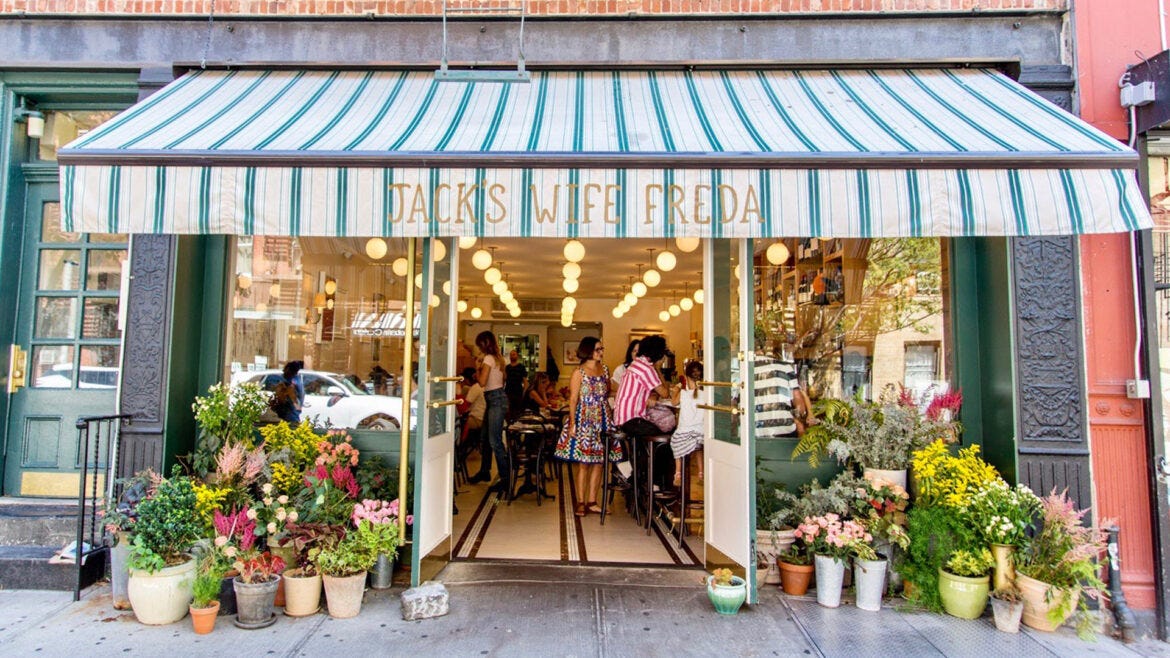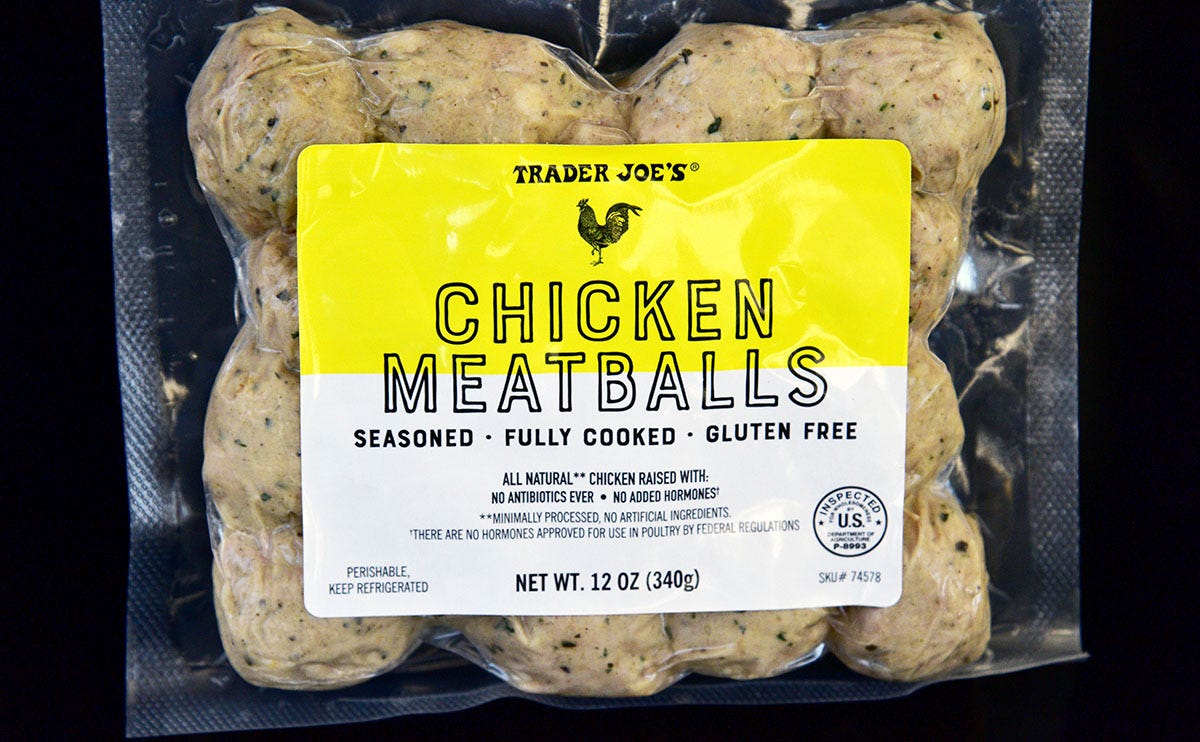A few days ago, a friend sent me New York Magazine’s review of Eel Bar. The caption begins: “For a certain kind of New Yorker… Eel Bar’s sister restaurants represent a halcyon ideal of ‘our’ places: cozy, boozy, tasty.” Critic Matthew Schneier then details his experience with Eel Bar, and the other kitchens with which it shares both chefs and investors. “Something didn’t quite work” about Eel Bar’s opening last summer. But now, he writes, after months of inscrutable changes, both Eel Bar’s confidence and ambition have changed for the better.
I don’t think so. The Monday before this “re-assessment” of Eel Bar was published, I dined there with the same friend who sent me its NY Mag review. I found it cold, and lackluster, but not just because I trudged there during the heaviest snowfall this winter. Sometimes, a restaurant is just not very good; sometimes a restaurant isn’t really a restaurant, at all.
Eel Bar follows in the tradition of “cool restaurants” that have popped up in New York City over the last decade. As Schneier describes them, they are places where the ambiance is as important as the food, adorned with all the hallmarks of Millenial cool filtered through the mind of Emily Bode. Normally, the fare is predictable: burgers, fries, butter, salt, martinis. What sets Eel Bar and its “sisters” (Cervo’s, Hart’s, The Fly) apart is using this template to ask the question: isn’t Almodovar dope? Their food is brighter, sexier, definitely European, and only an acquired taste if you do not yet have a palate for delicious cuisine.
But make no mistake: dishes are far from complicated. While Cervo’s might serve lamb burgers or grilled head-on prawns, Eel Bar offers “gildas” and a plate of scattered meatballs with french fries. Perhaps this is a nod to the simple pleasures of San Sebastian, but when you have access to a Trader Joe’s and own a box of Diamond Kosher salt, nothing at Eel Bar feels worth it. I can buy Guindilla peppers on Amazon.
But what about the drinks? Eel Bar is a pun twofold, both because it does not serve Eel, and because it is not a bar. It calls itself a restaurant, so like any opened before it should be able to stand on the merit of its food alone. When Matthew Schneier defines a collective of New York restaurant regulars which desire all things cozy, boozy, tasty, he is, to me, describing what is endemic to dining culture in a city rife with glorified bars serving girl dinner at Michelin prices. In a decade, we will look upon curated vermouth menus and “pintxos” with the same disgust now reserved for craft beer and black truffle potato chips. Of course, some people will still enjoy these things, but they will be pedestrian.
Like clubstaurants, which are conceptual spaces designed for hanging out, Eel Bar and its ilk are much the same. Schneier writes about the food, influenced by “coastal cuisines of Spain, Portugal, and Italy without ever landing on one specific reference point.” He says that they are vibe restaurants, but is quick to specify that label is complimentary. To me, the vibe is not so much in the restaurant’s internal experience, but its outward expression. Eel Bar is the epitome of a restaurant you go to because you want to talk about it, rather than talking about it because you went there. The cuisine is indeterminate, because all that matters is that reservations are elusive.
At Cervo’s, the kitchen is open, and basically takes up half the front room. You leave smelling like garlic and oil and seafood, which is gross, but also part of its whole thing. It’s like that Bourdain quote where he says eating a full, disgusting meal on a date is the sexiest thing ever, but for people who want to drink bitter alcohol and eat escabeche. When the menu is one page, half is reserved for drinks, the “thing” is clear: even the desserts are filled with booze. Paprika oil stained Paloma Wool is the mark of a “good” meal, as much as it is also the mark of AMEX Global Dining Access by Resy. The concept here is getting a table for drinking next to Flynn McGarry: Kiki’s with decent food and less riff raff.
I am not against conceptual restaurants, if they own it. Like academia, the simplest disciplines are covered in spades. New York is filled with middling bistros and Spanish restaurants, places to pay too much for drinks that are too small. Pseudo-success is achieved by regurgitating tired concepts, but real success lies in an authentic discovery, or a novel take on existing territory. For example, Foul Witch makes Italian food as if filtered through the Ridley Scott film Legend. This is a feat, making both pasta and Ridley Scott seem interesting. But tinned fish and savory drink garnishes? From Pierce Abernathy’s Instagram to Sandy Liang cocktail hour, this territory is well-trodden, and there’s literally already a successful restaurant which does that in the same neighborhood. At the end of his review, Schneier calls Eel Bar “New Wave sexy,” noting that a friend thinks it could serve “inventive sushi rolls.” Neither are accurate descriptions of Eel Bar, but both would make for a more interesting concept. Nobu à la Godard? Now I’m interested.
In lieu of a concept, Eel Bar specifically defined itself as “Basque.” Ok, like the cheesecake. Oh, that is not on the menu? Just like the eels. Got it. The space is clean, but almost too clean. It has no aura. The kitchen is partitioned off from the rest of the restaurant. Like Cervo’s, half of the seating is at the bar, but even sidling up on a holiday weekend for some grub and conversation felt sterile. The most banter we exchanged with our bartender was when we were informed that the “chicken al ajillo with pochas and basque peppers” would take 30 minutes to cook. I wasn’t in a rush, but maybe Eel Bar was, anxiously trying to conjure a “vibe” where there is none to be found. If the restaurant is supposed to be San Sebastian-esque, planting a seed of doubt about the coursing of dishes is not what I’d expect. Or, maybe I wasn’t drinking enough. Though after the heavy praise in New York Magazine, the aforementioned chicken was renamed on the menu: half chicken with pochas beans and garlic. At that point, they might as well add the cook time too.
The chicken wasn’t even bad. It was actually quite good, as were the fries with mayo. It is definitely too expensive, which is worth complaining about only because of Eel Bar’s lack of ambiance: playing ‘Come On Home’ by the Lijadu Sisters over the Sonos does not equal atmosphere. The rest of the food was flat: fried green tomatoes with piperades and goat cheese that was watery, piquillo peppers stuffed with boring lobster on top of toast that was stale. My friend ordered meatballs and fries, continually lamenting his choice for days afterward. Mushy, unpleasant, made with indiscernible meat (according to Schneier, chicken and pork, though the menu does not give any definite answer).
Perhaps at first Eel Bar “didn’t quite work” because the restaurant is just not very good. Cervo’s is too small, and it’s become too hard to get a table. But why call in a favor there when you can walk-in down the street without a fuss. The joy of Eel Bar, for the New York City professional media class, is its pedigree-defying ease of entry. In McNally terms, Eel Bar is like Lucky Strike, or Schiller’s. Beloved for reasons unspoken, destined to close in the shadow of its siblings. Sure, it is a beautiful space, with its wood paneling and stainless steel detailing. From the outside, its pebbled glass windows offer a sexy, opaque invitation. It’s too bad there’s nothing going on inside.









only person i’ve ever seen post about eating there is an influencer turned magazine “fashion” writer who has obscene family money and has never published an actual opinion